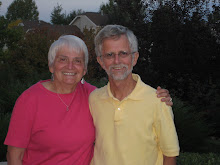 More sunshine today as we continued our Oregon Coast adventure. We're now on the north coast. We left Tillamook and drove through some of the first settled communities on the west coast. When folks arrived from the Oregon Trail they continued to the coast and used the coastal road to move into new areas. One of the most difficult areas was "Hug Point" as the travelers had to hug the rock with their wagons to get around the point. The road was closed during high tide. These were some solitary rocks that had been left by the tide.
More sunshine today as we continued our Oregon Coast adventure. We're now on the north coast. We left Tillamook and drove through some of the first settled communities on the west coast. When folks arrived from the Oregon Trail they continued to the coast and used the coastal road to move into new areas. One of the most difficult areas was "Hug Point" as the travelers had to hug the rock with their wagons to get around the point. The road was closed during high tide. These were some solitary rocks that had been left by the tide.On we went to the famous Cannon Beach (named for a cannon that washed up on the beach in 1846). Haystack Rock, the large one in the middle, is part of the Oregon Islands National Wildlife Refuge and the unofficial symbol of Cannon Beach. It's home to thousands of birds in the spring and between April and August, tufted puffins abound. We were really sorry to miss those!
 On up the road we went to Ecola State Park which offers dramatic views of the coastline and Haystack Rock. In 1806, Captain William Clark of the Lewis and Clark exppedition named a creek in this area Ecola Creek, based on the Chinook Indian word for whale, ekoli.
On up the road we went to Ecola State Park which offers dramatic views of the coastline and Haystack Rock. In 1806, Captain William Clark of the Lewis and Clark exppedition named a creek in this area Ecola Creek, based on the Chinook Indian word for whale, ekoli.  This was our view for lunch! We walked down to the lighthouse that was at the end of the point, but it was closed on Mondays. It's one of the smallest ones, so we were able to get very close to the light. It was a little nippy up there with the wind, but gorgeous sun!
This was our view for lunch! We walked down to the lighthouse that was at the end of the point, but it was closed on Mondays. It's one of the smallest ones, so we were able to get very close to the light. It was a little nippy up there with the wind, but gorgeous sun! This is William and Clark country so we stopped in Seaside to see the Salt Works site that commemorates the expeditions salt making camp where they spent more than a month boiling seawater to make enough salt to last the winter and their return trip home. Took a little searching to find it, but it was interesting. We then headed to Ft. Clatsop, where the expedition spent the winter from Dec. 1805-March 1806. There is a replica of the old fort as well as a visitor's center and film about life during those times. Very interesting.


